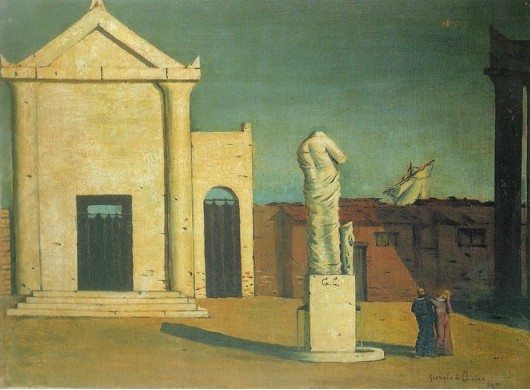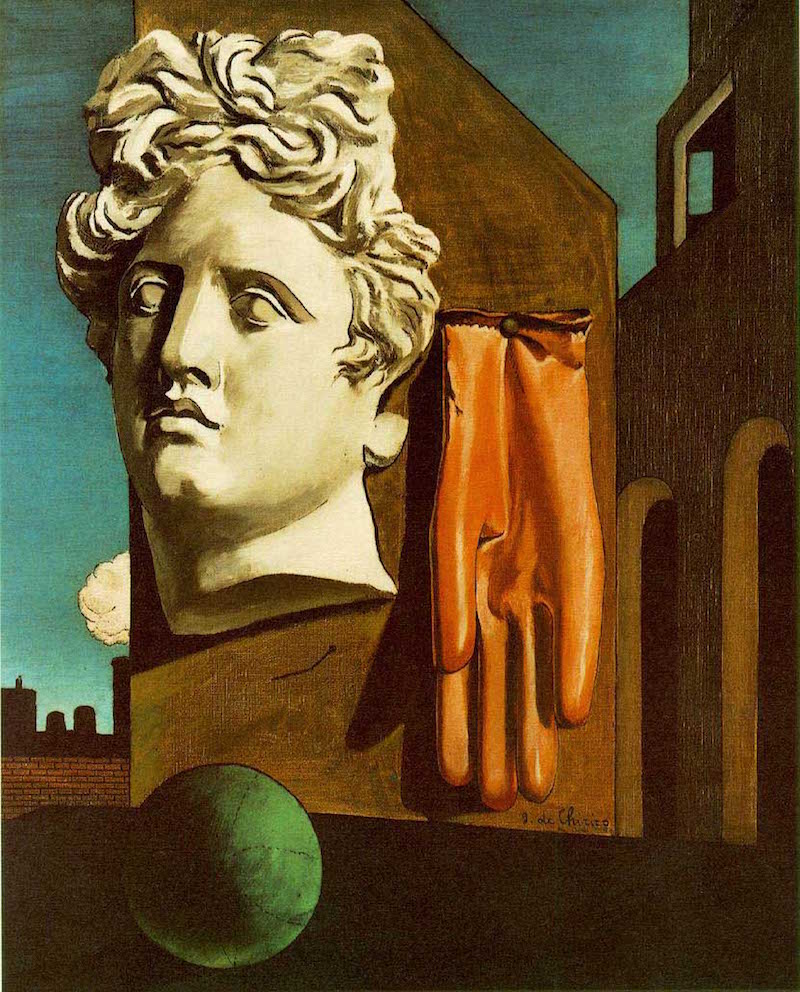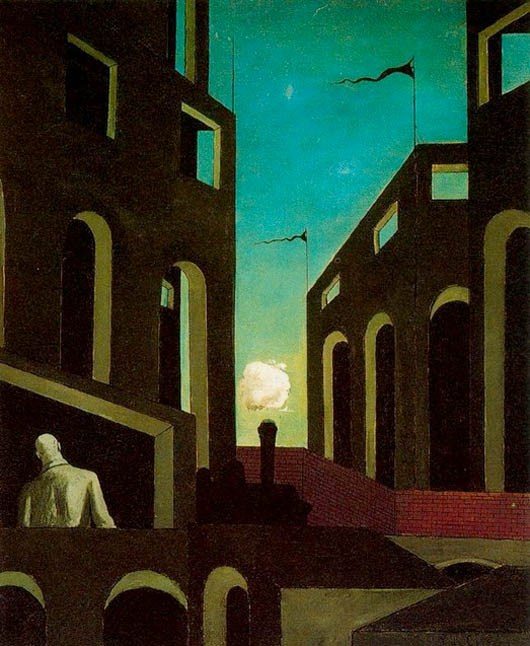Giorgio de Chirico
Episode #10 of the course “Great surrealist painters of all time”
Italian painter Giorgio de Chirico, born in 1888, did not consider himself a Surrealist, but his dark and “metaphysical” style certainly inspired a generation of artists. He was interested in the nature of reality, and he read deeply into philosophy and psychology to interpret those thoughts into fantastical images.
 The Enigma of an Autumn Afternoon
The Enigma of an Autumn Afternoon
After studying art in Munich and Italy, Giorgio de Chirico painted The Enigma of an Autumn Afternoon, which debuted in 1911. The use of haunting statues and mysterious shadows would become recurring themes in his work, and his technique of flat lines and interesting perspectives would become integral to the artists he inspired. De Chirico sold his first painting, The Red Tower, in 1913 and exhibited throughout Europe.
 The Red Tower
The Red Tower
Throughout World War I de Chirico served in the Italian Army and his work evolved into its Metaphysical style. His most famous paintings, such as Love Song and The Disquieting Muses, were from this time period. The sharp shadows and features of the statues seemed to speak to people as much about the times and social consciousness as about the personal aspects of de Chirico’s work itself. His combination of technological with natural scenes, such as in The Joy of Return, earned later reviews as being “in love with the enigma.”
 Love Song
Love Song
 The Joy of Return
The Joy of Return
In his later career, de Chirico broke with the Surrealists and focused on painting a more Neoclassical form and style. He experimented with different media, including book illustration and sculpture, but never received the same acclaim as before. De Chirico was bitter, and when art pieces he fraudulently signed made their way into the market, his reputation was damaged. He never fully recovered from the scandal before he died in Rome in 1978.
Share with friends

